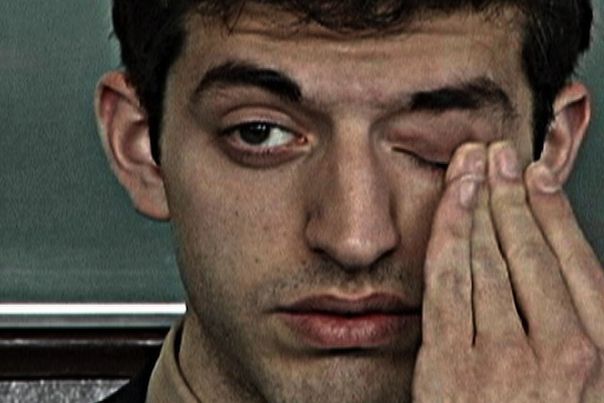More than Meets the Eye
Legendary avant-garde playwright and theatre director Richard Foreman returns to filmmaking with the astounding ONCE EVERY DAY.

ONCE EVERY DAY
If we look at a face long enough does it get more or less familiar? Do we come closer to reality by keeping it at a distance? In what layer of the image does the truth reside? What urges us to colour every face with a story? These are the questions that emerge from the intriguing experimental film ONCE EVERY DAY, screening in Berlinale’s Forum Expanded programme. This film marks legendary avant-garde playwright and theatre director Richard Foreman’s return to filmmaking after a thirty-five year pause.
Foreman, who is the founder and artistic director of the famous Ontological-Hysteric Theatre, worked with stage actors to weave together a series of close-ups and repetitive gestures. He not only wrote and directed, but also edited the film – using images of the actor’s faces and bodies to compose visual music. Meaning arises through his editing; repetition and freeze frames give their faces an almost metaphysical aura. By being forced to look at the same image over and over again, the audience begins to think about what is not being shown and what lies hidden behind these faces and actions.
ONCE EVERY DAY is a mirror through which to reconsider our own behavioural patterns, as well as those of other people. Foreman is interested in deconstructing these patterns, because he wants to reestablish a more truthful relation to reality and other people. Throughout the film, two sentences are repeatedly heard on the soundtrack, sometimes he uses the whole sentence, sometimes just a few words: “The world in which I’m always right” is juxtaposed with the other key statement: “The world in which to have an original idea may not be the best choice available.” These phrases work as bookends to summarise his intentions. By bringing together these conflicting notions with the images in the film, Foreman comes close to the truth, however transient, of the faces and bodies we have been watching on the screen.

